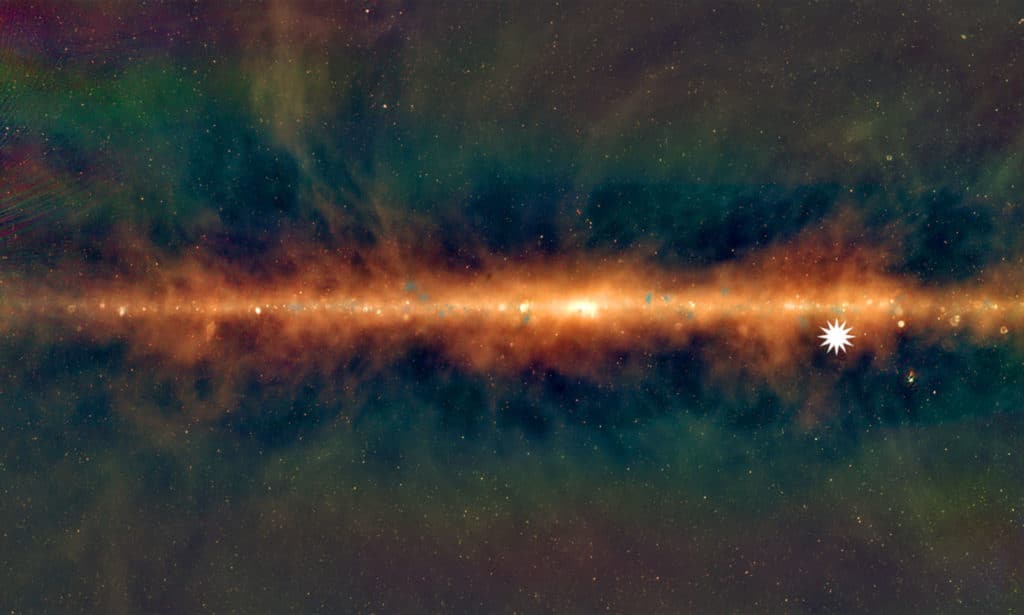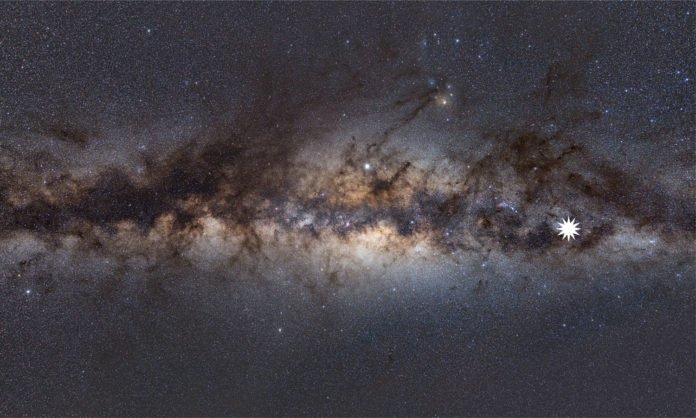While mapping radio waves in the universe, a team of astronomers spotted an unusual object releasing enormous energy. This object is unlike anything astronomers have seen before. According to astronomers, it could be a neutron star or a white dwarf with an ultra-powerful magnetic field.
The team reported that the object releases a giant burst of energy three times an hour. It emits a beam of radiation that crosses our line of sight. And for a minute in every twenty, this strange object is one of the brightest radio sources in the sky.
This never-before-seen object is incredibly bright and smaller than the Sun. It emits highly-polarised radio waves, indicating that the object must have an extremely strong magnetic field.
Astrophysicist Dr. Natasha Hurley-Walker, from the Curtin University node of the International Centre for Radio Astronomy Research, said, “This object was appearing and disappearing over a few hours during our observations. That was completely unexpected. It was kind of spooky for an astronomer because there’s nothing known in the sky that does that.”

“And it’s quite close to us—about 4000 lightyears away. It’s in our galactic backyard.”
The object was discovered using the Murchison Widefield Array (MWA) telescope. Curtin University Honours student Tyrone O’Doherty spotted the object. He then used a new technique.
Objects that turn ‘on and off’ in the universe are transients. There are two types of transients: Slow transients and Fast transients. Slow transients might appear over the course of a few days and disappear after a few months. Fast transients flash on and off within milliseconds or seconds.
ICRAR-Curtin astrophysicist and co-author Dr. Gemma Anderson said, “Finding something that turned on for a minute was weird.”
Dr. Hurley-Walker said, “the observations match a predicted astrophysical object called an ‘ultra-long period magnetar.'”
“It’s a type of slowly spinning neutron star that has been predicted to exist theoretically.”
“But nobody expected to directly detect one like this because we didn’t expect them to be so bright. Somehow it’s converting magnetic energy to radio waves much more effectively than anything we’ve seen before.”
The team is now monitoring the object with the MWA to see if it switches back on.
Dr. Hurley-Walker said, “If it does, there are telescopes across the Southern Hemisphere and even in orbit that can point straight to it.”
“More detections will tell astronomers whether this was a rare one-off event or a vast new population we’d never noticed before.”
Journal Reference:
- Hurley-Walker, N., Zhang, X., Bahramian, A. et al. A radio transient with unusually slow periodic emission. Nature 601, 526–530 (2022). DOI: 10.1038/s41586-021-04272-x
